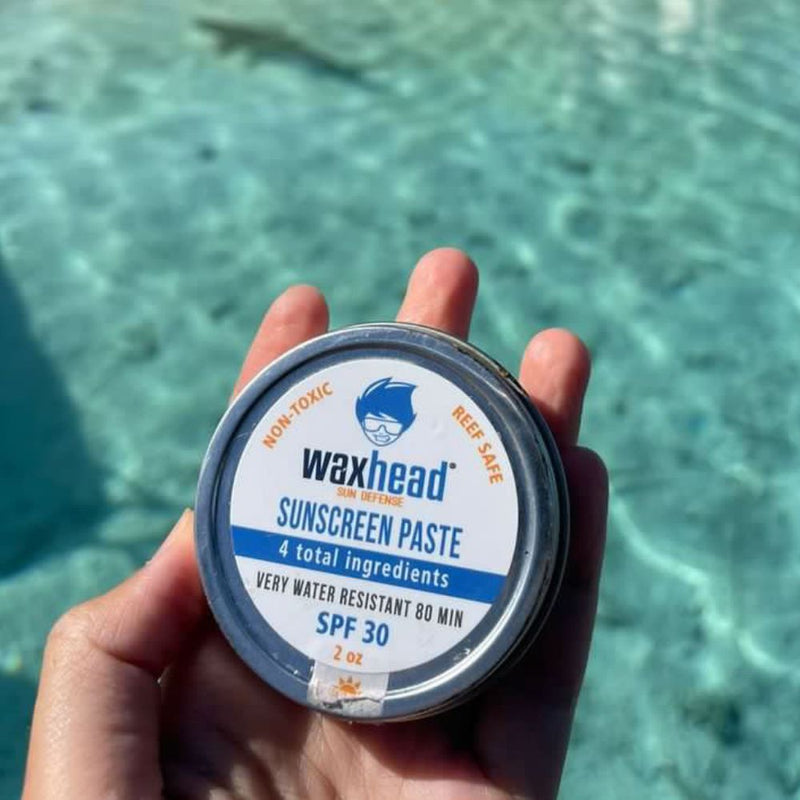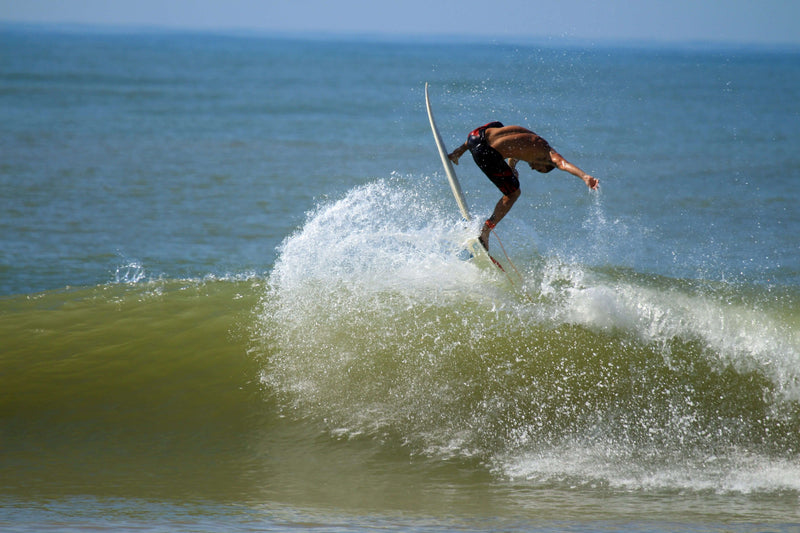Choosing the right sunscreen is crucial when protecting your toddler's delicate skin from the sun's harmful rays. With a plethora of options on the market, selecting a sunscreen that is both effective and safe can be overwhelming.
This guide will discuss the essential factors, focusing on non-toxic sunscreens' health and environmental benefits, particularly those containing non-nano zinc oxide. We'll also delve into why chemical sunscreens can harm people and the planet. By the end of this article, you'll have a solid understanding of choosing the best sunscreen for your toddler.
The Importance of Sun Protection for Toddlers
Toddlers have more sensitive skin than adults and are more susceptible to sunburns and long-term skin damage. Proper sun protection is vital to prevent immediate issues like sunburn and reduce the risk of skin cancer later in life. The best way to protect your toddler is by using a broad-spectrum sunscreen that guards against UVA and UVB rays.
Sunscreens come in various forms, including lotions, sprays, and sticks, but not all are created equal. The key is to choose a sunscreen that provides adequate protection and is safe for your toddler's skin. This is where non-nano zinc oxide sunscreens come into play.
Understanding Non-Nano Zinc Oxide
Non-nano zinc oxide is a natural mineral providing effective sun protection by sitting on top of the skin and physically blocking UVA and UVB rays. Unlike chemical sunscreens, which absorb UV radiation and convert it into heat, zinc oxide acts as a barrier, reflecting the sun's rays away from the skin.
One of the primary benefits of non-nano zinc oxide is its safety profile. Because the particles are non-nano, they are too large to be absorbed into the skin and enter the bloodstream. This makes non-nano zinc oxide a safe choice for toddlers with more permeable skin than adults.
Chemical Sunscreens: The Hidden Dangers
Chemical sunscreens, such as those containing oxybenzone, octinoxate, and avobenzone, work by absorbing UV radiation. However, these chemicals can penetrate the skin and enter the bloodstream, potentially causing hormonal disruptions and allergic reactions.
Oxybenzone, in particular, has been linked to hormonal imbalances and can mimic estrogen in the body, posing risks to the endocrine system. Studies have shown that oxybenzone and other chemical sunscreen ingredients can be detected in blood, urine, and breast milk long after application, raising concerns about their long-term safety.
Environmental Impact of Chemical Sunscreens
In addition to health concerns, chemical sunscreens have a significant environmental impact. Ingredients like oxybenzone and octinoxate bleach coral reefs, leading to coral death and disrupting marine ecosystems. These chemicals wash off swimmers and enter the ocean, where they accumulate and cause harm.
Hawaii and several other locations have banned sunscreens containing oxybenzone and octinoxate to protect their coral reefs. By choosing a non-toxic sunscreen, you are safeguarding your toddler's health and helping preserve the environment.
The Benefits of Non-Nano Zinc Oxide Sunscreens
Safety for Delicate Skin: Non-nano zinc oxide sunscreens are gentle on sensitive skin, making them perfect for toddlers. They are also less likely to cause allergic reactions or irritations than chemical sunscreens.
Broad-Spectrum Protection: Zinc oxide provides comprehensive protection against UVA and UVB rays, ensuring your child is shielded from the full spectrum of harmful solar radiation.
Non-Absorption: The non-nano particles of zinc oxide do not penetrate the skin, staying on the surface to provide effective sun protection without entering the bloodstream.
Immediate Effectiveness: Unlike chemical sunscreens, which must be applied 15-30 minutes before sun exposure, zinc oxide sunscreens are effective immediately upon application.
Reading the Ingredients: What to Look For
When selecting a sunscreen for your toddler, it is crucial to read the ingredient list carefully. Look for products that contain non-nano zinc oxide as the active ingredient. Avoid sunscreens with chemical UV filters such as oxybenzone, octinoxate, and avobenzone.
Consider the overall formulation in addition to the active ingredients. Choose sunscreens free from synthetic fragrances, parabens, phthalates, and other potentially harmful additives. Opt for products with natural, food-grade ingredients that are safe for your toddler's delicate skin.
Water Resistance and Application
Toddlers love playing in the water, so a water-resistant sunscreen is essential. Look for sunscreens labeled as water-resistant for at least 40 to 80 minutes, ensuring continuous protection during water activities.
Application is another critical factor. Consider sunscreen sticks or lotions that spread easily on the skin for ease of use. Ensure the sunscreen is applied generously and evenly, covering all exposed areas, including the face, ears, neck, and feet.
The Role of SPF
Sun Protection Factor (SPF) measures how well sunscreen protects against UVB rays. For toddlers, an SPF of at least 30 is recommended. SPF 30 blocks about 97% of UVB rays, while SPF 50 blocks approximately 98%. Higher SPF values offer slightly better protection but can give a false sense of security, leading to inadequate application and reapplication.
Regardless of the SPF, it is essential to reapply sunscreen every two hours and immediately after swimming or sweating to maintain effective protection.
The Impact on Coral Reefs
Choosing a reef-safe sunscreen is vital to protecting marine life. Sunscreens with non-nano zinc oxide are reef-safe as they do not contain harmful chemicals that bleach and damage coral reefs. By using a reef-safe sunscreen, you contribute to preserving marine ecosystems for future generations.
Practical Tips for Sun Safety
Use Sunscreen Daily: Apply sunscreen daily, even on cloudy days, as UV rays can penetrate clouds and cause skin damage.
Seek Shade: Keep your toddler in the shade whenever possible, especially during peak sun hours from 10 a.m. to 4 p.m.
Wear Protective Clothing: Dress your toddler in lightweight, long-sleeved shirts, pants, wide-brimmed hats, and sunglasses to provide additional protection from the sun.
Set a Good Example: Children learn by observing their parents. Demonstrate good sun safety habits by using sunscreen yourself and practicing other sun protection measures.
Conclusion
Choosing the right sunscreen for your toddler involves understanding the differences between chemical and physical sunscreens, which will give you the knowledge and confidence to make the best choice for your toddler's skin. Read ingredient labels.
Considering both health and environmental impacts when choosing a sunscreen for your toddler is a responsible and caring decision that benefits your child and the planet they will inherit. Non-nano zinc oxide sunscreens are a safe, effective, and environmentally friendly option for protecting your child's sensitive skin.
By prioritizing non-toxic ingredients and reef-safe formulations, you can ensure that your toddler enjoys the outdoors safely while also contributing to the preservation of our planet. Remember, sun protection is critical to your child's health, and making informed choices today can lead to a lifetime of healthy skin.
Recommendation: Waxhead Sun Defense Sunscreen
As you navigate the myriad of sunscreen options available, it's essential to choose a product that prioritizes your toddler's safety and the health of the environment. Waxhead Sun Defense Sunscreen is an excellent choice for health-conscious outdoor parents. Formulated with non-nano zinc oxide, it provides superior broad-spectrum protection without the harmful chemicals found in many conventional sunscreens.
Waxhead's commitment to using only food-grade, non-toxic ingredients ensures that its sunscreen is gentle on your toddler's sensitive skin and highly effective against UV radiation. Additionally, Waxhead Sun Defense Sunscreen is reef-safe, contributing to preserving marine ecosystems.
By choosing Waxhead, you protect your child and support a company dedicated to producing safe, eco-friendly products. Waxhead Sun Defense Sunscreen offers peace of mind, knowing you make the best choice for your family and the planet. Protect your toddler with Waxhead and enjoy worry-free outdoor adventures.





























